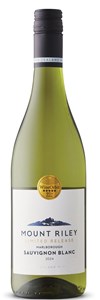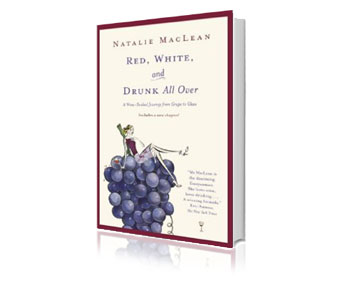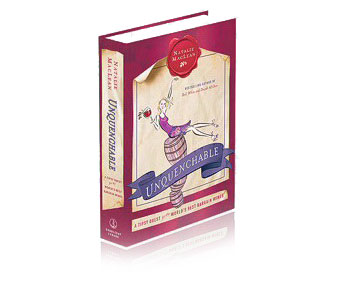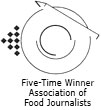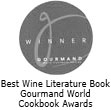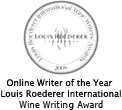Robust Food Wines
November 30, 2008

By Rachel Naud
When the weather outside turns frightful, there's nothing more satisfying than staying home with a warm meal and a good glass of wine.
A steaming bowl of stew, a mouth-watering prime rib or a heaping plate of pasta can bring comfort on the worst winter nights. But the meal just isn't complete without the perfect vintage on the table.
And just as our meals become heartier and richer in the winter, the wines that pair perfectly with comforting fare are of the full-bodied kind.
"I look at my wine wardrobe the way I look at my clothing and I think as the weather turns colder, you want to look at the warmer wines," says Natalie MacLean, a certified sommelier and author of Red, White and Drunk All Over (Doubleday). "The dishes we eat in the winter tend to be heartier . . . so as the weather cools down, I look for robust reds, particularly Australian Shiraz, Cabernet Sauvignon from Chile or California, or Argentinian Malbec."
Rita Stephens, product consultant for the Liquor Control Board of Ontario (LCBO), says other wines well-suited to the season include full-bodied Bordeauxs and Cote du Rhones.
White wine lovers needn't go without for the winter. There are many full-bodied white wines on the market that also pair perfectly with a hearty winter meal.
"If you prefer white wine, you still have options during the winter," says MacLean, who opts for full-bodied Chardonnays. "Look for a white wine with some oak in it. When wine is aged in oak it gives it those warm, toasty vanilla flavours that are extremely comforting."
When pairing food with wine, MacLean says three things have to work together: flavour, texture and weight. "Does your wine have a lot of cherry plum flavours?" asks MacLean. "Is that echoed in your dish?"
MacLean says where texture is concerned, the mouth-feel should be similar between the wine and the food.
"You want those honking reds and whites to go with a robust dish," says MacLean. "A wimpy wine will just get clobbered by a big steak."
MacLean says steak is best enjoyed with a red wine that has some tannins in it, such as a Cabernet Sauvignon. Tannins are byproducts of the grape skin, stems and pits that MacLean says "make your mouth feel furry."
"If you brewed yourself a cup of tea, put the tea bag in it, walked away and came back an hour later and took a sip, you would feel that gritty astringent feel on your palette -- similar to tannins in wine," adds Stephens.
MacLean says high-tannin wines pair well with steak because the proteins from the steak attach themselves to the tannins, making both the steak and wine taste better.
"It's basically mouth chemistry," says MacLean. "That's why it works."
High-tannin wines are also a good pairing with meals high in fat.
Jennifer McLagan, an Australian-trained chef and author of Fat: An Appreciation of a Misunderstood Ingredient (McClelland & Stewart), says one of her favourite winter comfort foods is Cassoulet -- beans layered with sausage, lamb and duck confit, which is cooked slowly in the oven.
Because this dish is high in fat, she serves it with a hearty wine from the southwest of France or a Shiraz.
MacLean and Stephens say a roast beef dinner is best paired with an Australian Shiraz, Bordeaux or Barbera from Northern Italy.
When it comes to pairing pasta with wine, it depends on how it's prepared.
Traditional red-sauce pastas are great with Italian reds whose acidity matches the tangy acidity of the tomato sauce; a crisp Riesling or Sauvignon Blanc will cut through the fat in a creamy white sauce.
If you're dishing out a hearty Irish stew, serving a robust red -- a Malbec or Cabernet Sauvignon -- will complete the meal.
Remember, though, these are only guidelines, MacLean says.
The best rule to follow when pairing a wine with a meal is to simply follow the lead of your palette.
"Pick wines that you like," she says. "Relax -- have a drink."
Reprinted with permission. Please ask permission before copying or using
this material. Comments? Suggestions? If you'd like to receive Natalie's free
e-wine newsletter, sign up at
www.nataliemaclean.com. It's free,
and your e-mail address will be kept confidential.
 Best Books of the Year
Best Books of the Year Best Books of the Year
Best Books of the Year


